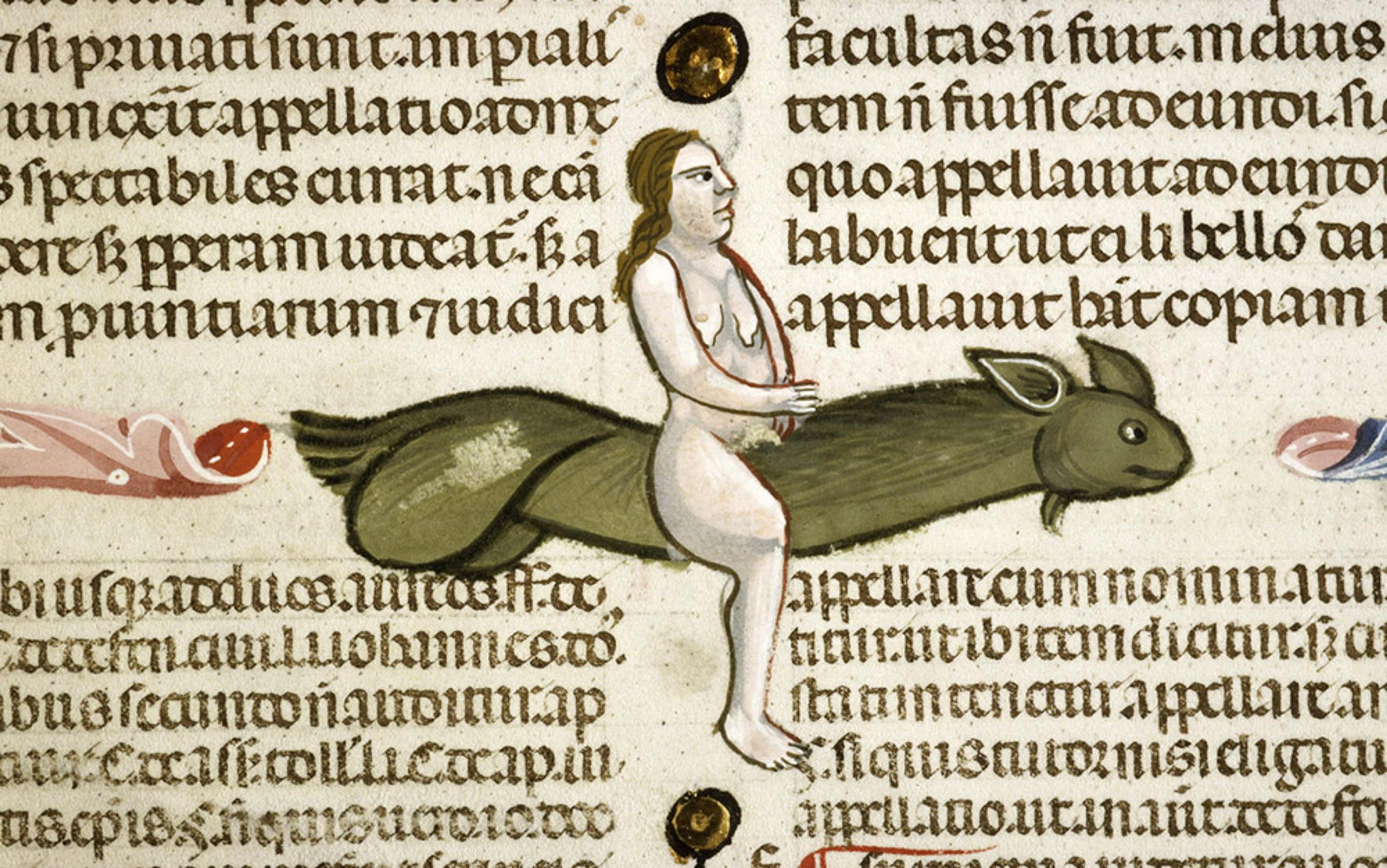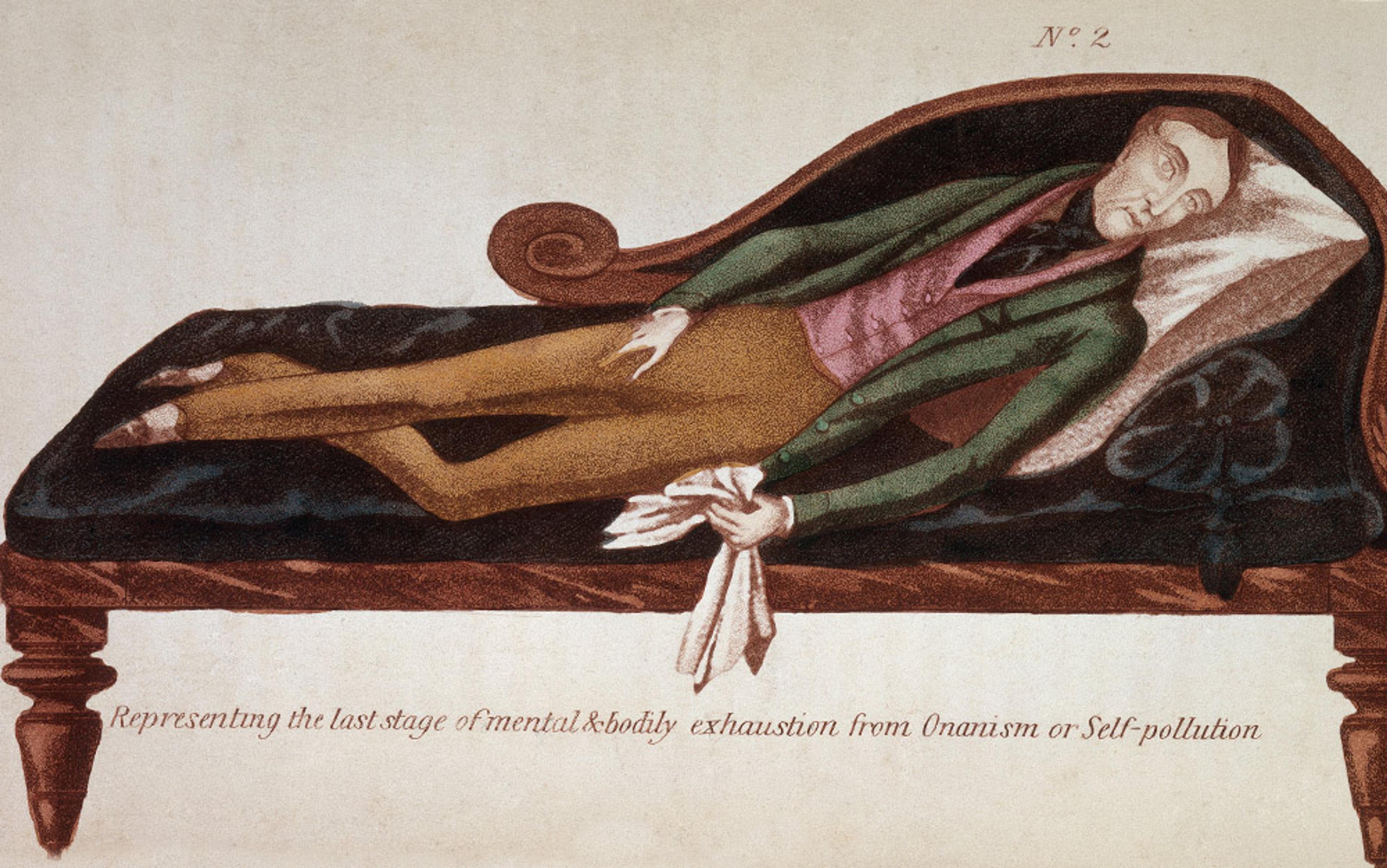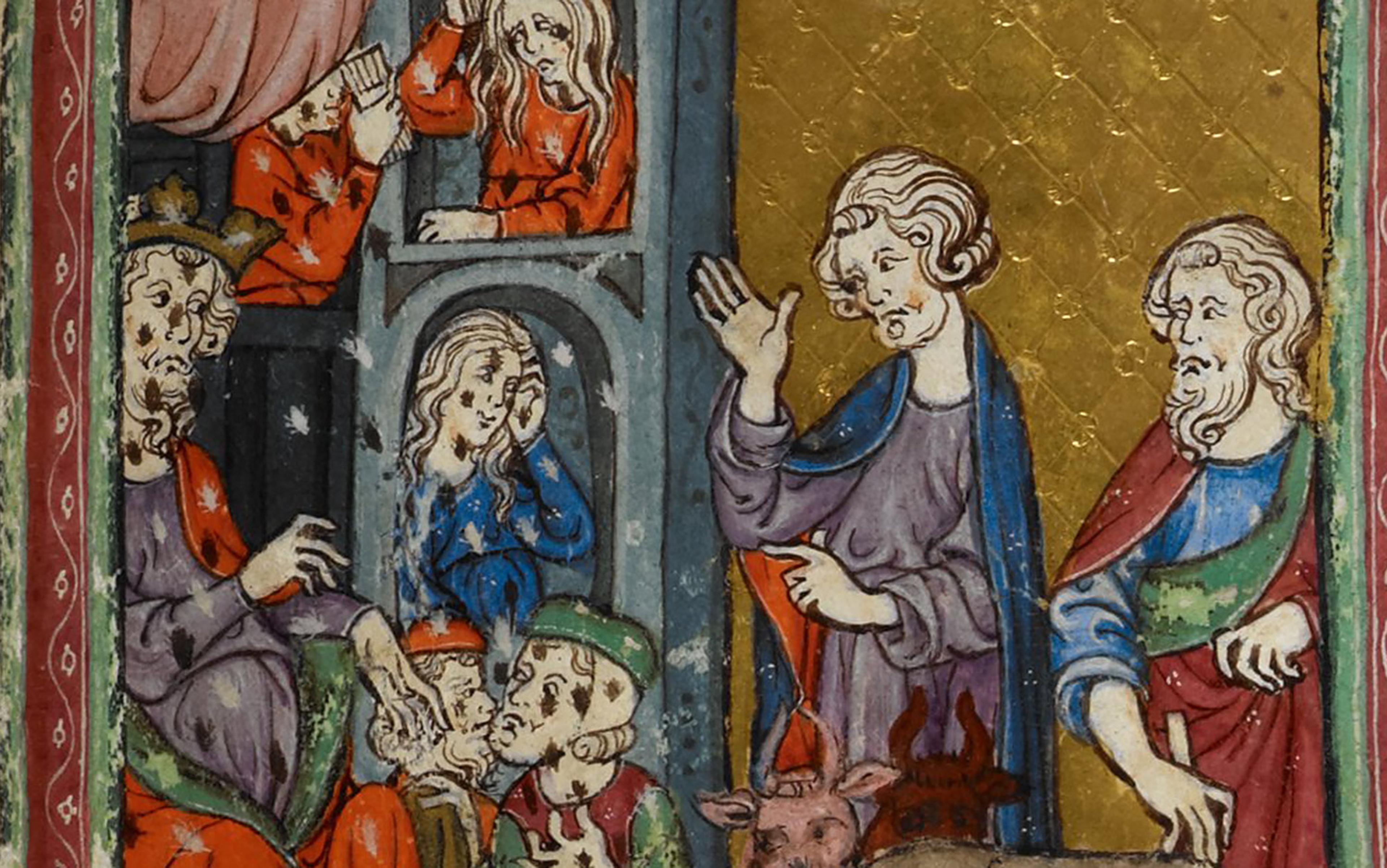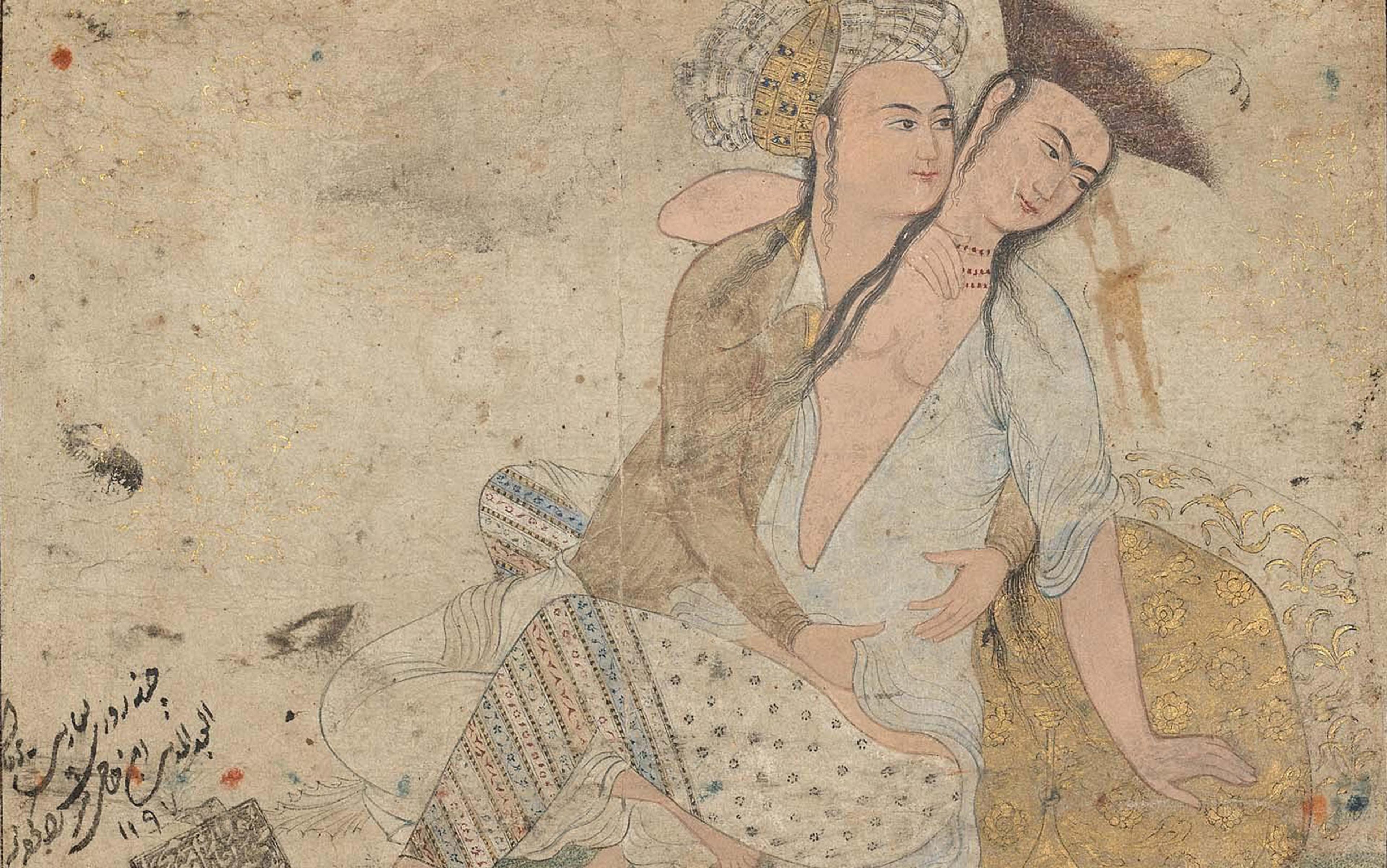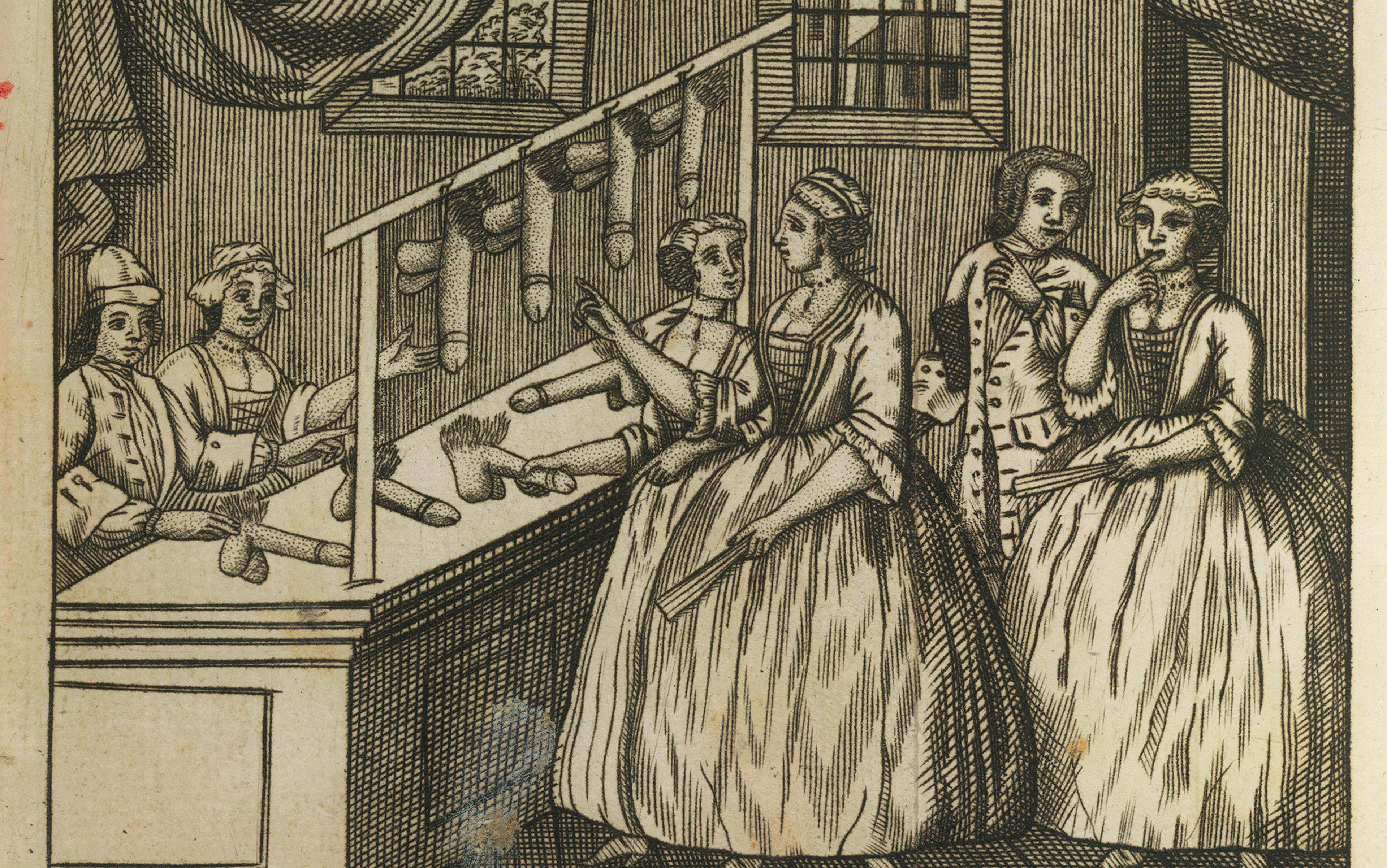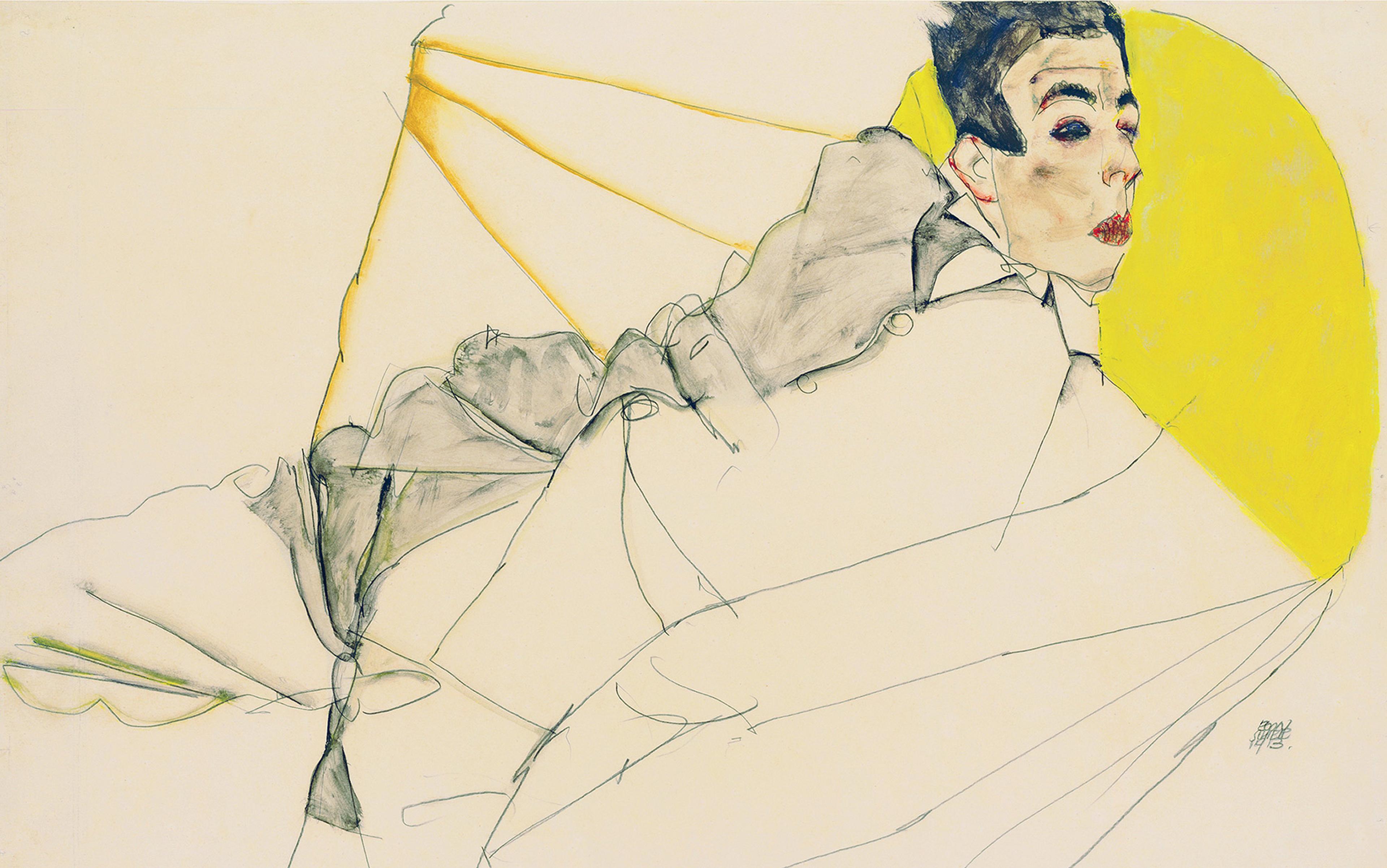In the popular imagination, the history of sex is a straightforward one. For centuries, the people of the Christian West lived in a state of sexual repression, straitjacketed by an overwhelming fear of sin, combined with a complete lack of knowledge about their own bodies. Those who fell short of the high moral standards that church, state and society demanded of them faced ostracism and punishment. Then in the mid-20th century things changed forever when, in Philip Larkin’s oft-quoted words, ‘Sexual intercourse began in 1963 … between the end of the Chatterley ban and the Beatles’ first LP.’
In reality, the history of human sexuality is far more interesting and wild. Many prevailing presumptions about the sex lives of our medieval ancestors are rooted in the erroneous belief that they lived in an unsophisticated age of religious fanaticism and medical ignorance. While Christian ideals indeed influenced medieval attitudes to sex, they were rather more complex than contemporary prejudices suggest. Christian beliefs interacted with medieval medical theories to help shape some surprising and sophisticated ideas about sex, and a wide variety of different sexual practices, long before the sexual revolution.
The case of the French cleric Arnaud de Verniolle illustrates the sophistication of medieval sexuality. One day in the early 14th century, when Arnaud was a student, he had sex with a prostitute. Several years later, he confessed this lapse to the Inquisition, explaining that:
At the time they were burning the lepers, I was living in Toulouse; one day I did it with a prostitute. And after I had perpetrated this sin my face began to swell. I was terrified and thought I had caught leprosy; I thereupon swore that in future I would never sleep with a woman again.
Arnaud’s tale is not unusual. Many medieval men found themselves with undesirable symptoms after a brothel visit, and attributed their plight to their sexual behaviour. Among the various medical miracles attributed to St Thomas Becket, for example, was the cure of Odo de Beaumont, who became leprous immediately after a late-12th-century visit to a prostitute. Much has been made of the medieval tendency to interpret disease as a product of sexual sin. Too much. In fact, the medieval tendency to see disease as sexual sin was not solely based on moral judgments – there were also strong medical elements.
Concerns about the sexual transmission of disease via prostitutes were often addressed in an entirely rational manner. Sometimes, for example, local authorities took preventative action: a set of regulations from 15th-century Southwark banished women with a ‘burning sickness’ (probably gonorrhoea) from the local stews (brothels). Moreover, the concerns of the people of Southwark were rooted in medical theory. The Prose Salernitan Questions, a 13th-century medical text, explained how a woman might be left unharmed after having intercourse with a leper, but her next lover would contract the disease: the coldness of the female complexion meant that the leper’s semen would remain in the woman’s uterus, where it would turn to putrid vapour. When the penis of the healthy man came into contact with this vapour, the heat of his body would ensure that it was absorbed through his open pores. Sores would soon appear on his genitals, before spreading around his body. Placed within the context of contemporary medical ideas, Arnaud’s fears over his tryst with a prostitute made perfect sense.
Fortunately for Arnaud, and many others, it was often possible to treat sexually transmitted leprosy. The 14th-century English physician John of Gaddesden suggested several protective measures that a man should take after having sexual relations with a woman he believed to be leprous. He should cleanse his penis as soon as possible, either with his own urine or with vinegar and water. Then he should undergo intensive bleeding by a phlebotomist, followed by a three-month course of purgation, ointments and medication.
He treated this unfortunate individual by cutting away the dead flesh with a blade, then applying quicklime
If such prophylactic measures failed, then the patient might need one of the many remedies for swollen, itchy or pustulent genitals found in medical treatises and recipe collections. The 12th-century medical compendium Trotula noted that there are men ‘who suffer swelling of the virile member, having there and under the prepuce many holes, and they suffer lesions’. Such a man should use a poultice to reduce the swelling. Then, ‘we wash the ulcerous or wounded neck of the prepuce with warm water, and sprinkle on it powder of Greek pitch and dry rot of wood or of worms and rose and root of mullein and bilberry’.
Such preparations were undoubtedly unpleasant, but the surgical remedies recommended by the 14th-century English surgeon John of Arderne were downright brutal. In one of his recorded cases, ‘the man’s yard began to swell after coitus, due to the falling of his own sperm, whereof he suffered great grievousness of burning and aching as men do when they are so hurt’. Arderne treated this unfortunate individual by cutting away the dead flesh with a blade, then applying quicklime – a process that must have been extremely painful, but apparently produced a cure.
Both Trotula and Arderne describe symptoms that suggest a sexually transmitted disease, and Arderne directly links sexual intercourse with his patient’s symptoms. However, neither author explicitly identifies their remedies as cures for diseases transmitted by sexual contact. The man with the swollen yard might well have been viewed by his contemporaries as a victim not of infection, but of overindulgence.
Medieval physicians saw too much sex as a real medical concern. Conventional wisdom held that several noblemen died of sexual excess. John of Gaunt, the 14th-century first duke of Lancaster, allegedly ‘died of putrefaction of his genitals and body, caused by the frequenting of women, for he was a great fornicator’. Today, his symptoms would suggest venereal disease, but his contemporaries would probably have seen parallels with the case of Ralph, count of Vermandois. This 12th-century French nobleman had recently married his third wife when he fell seriously ill. During his convalescence, he was advised by his physician that he must abstain from intercourse, but disregarded this warning. When the doctor detected from Ralph’s urine that he had done so, he advised him to set his house in order, for he would be dead within three days – a prognosis that proved to be accurate.
According to medieval understandings of the body, based on the system of the four humours (blood, phlegm, black bile and yellow bile), these men’s behaviour presented problems. The humours system derived from the idea that health was based on an equilibrium of the humours, and illness the product of imbalance. Humours were balanced, and good health maintained, through the expulsion of various bodily fluids, including semen. Regular sexual intercourse was thus part of a healthy life for most men, but moderation was key. Too much sex would leave the body depleted; in the most serious cases it could have fatal consequences, as Count Ralph found to his cost.
On the other hand, medieval medical authority held that too little sex presented a medical problem: celibacy was potentially detrimental to health, particularly for young men. Long-term celibacy meant the retention of excess semen, which would affect the heart, which in turn could damage other parts of the body. The celibate might experience symptoms including headaches, anxiety, weight loss and, in the most serious cases, death. Although celibacy was highly valued as a spiritual virtue in medieval society, in medical terms the celibate was as much at risk as the debauchee.
King Louis VIII of France, for example, insisted on remaining faithful to his wife while fighting in the Albigensian Crusade of 1209-29. Conventional opinion attributed his death to the resulting celibacy, making him the most famous victim of death by celibacy. According to the 12th-century Norman poet Ambroise, abstinence claimed many victims:
By famine and by malady
More than 3,000 were struck down
At the Siege of Acre and in the town
But in pilgrims’ hearing I declare
A hundred thousand men die there
Because from women they abstained.
’Twas for God’s love that they restrained
Themselves. They had not perished thus
Had they not been abstemious.
For most crusaders, sexual abstinence was (at most) a temporary inconvenience, to be endured only until they returned home and were reunited with their wives. But for medieval Europe’s many priests, celibacy was a lifelong state, and this could leave them facing a difficult choice. Thomas Becket’s doctor urged him to give up celibacy for the sake of his health, telling him that the celibate life was incompatible with his age and complexion, but the saint disregarded the physician’s advice. Becket lived for many years after this (and ultimately died a martyr at the hands of an assassin), but other bishops were less fortunate. An unnamed 12th-century archdeacon of Louvain, having struggled to remain celibate for a long time, was promoted against his will to the bishopric of the same city. For a month, he abstained from all sexual activity, but soon his genitals swelled up and he became seriously ill. His family and friends urged him to secretly ‘take a woman to himself’, but he was determined to resist temptation. Within days, he was dead.
Routine bleedings were used to balance the monks’ humours, minimising involuntary emissions of semen
Non-saintly celibates who faced the challenge of celibacy tended to favour the obvious cure. Maurice, an 11th-century bishop of London, was rumoured to have been advised by his doctors to ‘look to the health of his body by the emission of humours’, and to have prolonged his life by breaking his vow of celibacy. Others, hoping never to face this predicament, adopted behaviours (informed by medical theory) believed to protect the health of a celibate man by promoting alternative forms of excretion.
Humours-based medical theory held that all bodily fluids were processed forms of blood, and that their common origins rendered them interchangeable. Consequently, regular phlebotomy was deemed necessary for celibate men: routine bleedings were widely used in medieval monasteries to balance the monks’ humours and thus minimise the risk of involuntary emissions of semen. Weeping (for example, the lachrymose prayers favoured by pious individuals) could also serve as an alternative to sexual intercourse, with the blood that would have been converted into semen instead producing tears. Exercise and bathing, both of which produced sweat, were also useful for those who wished to practise long-term abstinence.
As well as taking measures to encourage the excretion of superfluities, a celibate man needed to be careful about what he put into his body. Diet thus directly related to sexual health. The problem was threefold. Firstly, the proximity of the genitals to the stomach meant that the former would be warmed by the food or wine contained in the latter, providing the heat that defined the male body, and was necessary for the production of semen. Secondly, semen was thought to be the product of completely digested food, with nourishing foods such as meat and eggs especially conducive to its production. Finally, certain windy foodstuffs (including beans) produced an excess of flatulence, which in turn produced an erection. Taken together, these factors made overindulgence at the table a real problem for priests. Numerous medieval writers told tales of monks who ate too well, and consequently experienced a violent desire for sex, along with almost continuous emissions of semen.
On the other hand, knowledge is power, and religious men could use fasting as a practical strategy to protect themselves from the health risks posed by clerical celibacy. A man who wished to avoid sex while maintaining his physical wellbeing would be well advised to fast regularly, and to eat a diet that consisted primarily of the cold foods and drinks that ‘impede, repress and thicken semen and extinguish lust’. Salted fish, vegetables in vinegar, and cold water were thought to be particularly suitable foods for monks.
In addition, some medical writers recommended anaphrodisiacs for men who wished to avoid sexual intercourse. The 11th-century physician Constantine the African recommended rue, a strong and bitter tea made from an evergreen shrub. Drinking rue, he wrote, would ‘dry out the sperm and kill the desire for intercourse’. Two centuries later, Peter of Spain (the only practising physician ever to become pope) was also recommending rue; alternatively, one could drink juice of water-lilies for 40 days. Maino de Maineri (a 14th-century physician whose employers included two bishops) included advice on anaphrodisiacs in his Regimen Sanitatis: a man who wished to repress lust should make use of ‘things which are cold’, such as lentils and lentil water cooled with cauliflower seeds, and water-lily and lettuce seeds and lettuce water, strongly vinegary, and also seeds of purslane. Being both celibate and healthy was difficult but, for those willing to live a life in which one’s chief pleasures were prayer and vegetable water, it was not impossible.
Although the most famous cases of death by celibacy relate to male clerics, women were, in their own way, equally vulnerable to this medical problem. According to contemporary medical theory, both sexes produced seed that was necessary for conception – and just like semen, the female seed needed to be expelled from the body during regular sexual intercourse. In a woman who was not sexually active, the seed would be retained within her body; as it built up, it would cause suffocation of the womb. The symptoms of this condition included fainting and shortness of breath, and in the most serious cases it could be fatal. For women, as for men, the best way to avoid death by celibacy was to get married and have regular, Church-sanctioned intercourse with one’s spouse. If this was not possible, there were a range of useful remedies, including restricted diets and vinegar suppositories. Some physicians, however, recommended a rather startling alternative: masturbation.
Unsurprisingly, the medieval Church took a rather dim view of this practice: most medieval penitentials (handbooks for confessors) identified masturbation as a sin, and imposed heavy penances for it – typically around 30 days of fasting, but sometimes as much as two years. On the other hand, masturbation was usually placed towards the bottom of the hierarchy of sexual sins, and confessors were permitted to make some allowance for those (including unmarried youths) who lacked another outlet for their desires. This caveat reflects the Church’s awareness of contemporary medical teachings: it was impossible to ignore the fact that medical authorities from Galen onwards had recommended masturbation as a form of preventative medicine for both men and women.
Later medieval physicians were rarely as explicit as Galen and other ancients. Late medieval medical books rarely mentioned male masturbation. For women lacking regular sexual relations, they offered a variety of treatments, including, stimulation of the genitals (either by the patient or by a medical professional). Such treatments were particularly suitable for women who were suffering from suffocation of the womb. If such a woman could not marry (for example, because she was a nun), and if her life was in genuine danger, then genital massage might be the only solution, and could even be performed without sin. The 14th-century English physician John of Gaddesden thought that such a woman should try to cure her condition through exercise, foreign travel and medication. But ‘if she has a fainting fit, the midwife should insert a finger covered with oil of lily, laurel or spikenard into her womb, and move it vigorously about’.
Having ‘desired’ a woman 70 times before matins, the monk died. His autopsy revealed a brain shrunk to the size of a pomegranate, and eyes that had been destroyed
Other medical writers, including clerics, echoed Gaddesden’s teachings. The 13th-century Dominican friar Albertus Magnus wrote extensively about human health. He argued that certain women needed to ‘use their fingers or other instruments until their channels are opened and by the heat of the friction and coition the humour comes out, and with it the heat’. Albertus thought that such a course of action would not only solve women’s health problems, but also lessen their desire for sexual intercourse, since ‘their groins are cooled off and they are made more chaste’. The view that female masturbation could prevent less socially acceptable forms of female sexual activity helped some medieval medical experts countenance it.
As with sexual intercourse, masturbation was to be enjoyed in moderation. Albertus told of a lustful monk who came to an unfortunate end: having ‘desired’ a beautiful woman 70 times before matins, the monk died. His autopsy revealed that his brain had shrunk to the size of a pomegranate, while his eyes had been destroyed. The manner of his death reflected one of the terrible realities of medieval life: sin was just one of many dangers associated with sex.
Long before syphilis arrived in Europe in the late 15th century, sexual health merited widespread concern. Prostitutes and their clients were thought to be at risk of contracting leprosy, a fearsome possibility for Arnaud and many others. But contagious disease was not the only problem. Arnaud vowed that he would never sleep with another woman, but he didn’t simply give up sex. Instead, he admitted that ‘in order to keep this oath, I began to abuse little boys’.
This solution was as distasteful then as now. It also reflected the widespread belief that sexual activity of some kind was medically necessary for most adults, and echoed fears that clerical celibacy would force priests into the same vice. When it came to sex, medieval people faced a dilemma: how to preserve the vital bodily equilibrium without exposing themselves to either disease or sin? The decline of humoural medicine and changes in religious belief have removed some of the anxieties faced by Arnaud and medieval people. But not everything has changed. Discourses about sex still revolve around conflicting demands of health, social pressures and personal inclination. As it was in the Middle Ages, sex in the 21st century remains both a pleasure and a problem.
If you enjoyed this Essay, Katherine Harvey went on to have success with her book The Fires of Lust: Sex in the Middle Ages. Of the connection between her book and this Essay, Katherine said: ‘“The Salacious Middle Ages” was my first serious foray into the subject of medieval sex, which I’d become interested in when researching medieval bishops who supposedly died of celibacy. But it grew into an entire book, “The Fires of Lust” (2021), which was commissioned by Reaktion after my editor there read this Aeon essay.’ You can also read more from Katherine Harvey on Aeon here.
